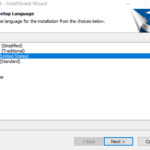How to use PowerRename in PowerToys on Windows 10 to rename several files at once.
If you wish to rename files in bulk with PowerRename in PowerToys on Windows 10, follow these steps.
1. Download and run PowerToys.
2. Turn on PowerRename.
3. Select all of the files you wish to rename and right-click them.
4. To rename the files, enter the criteria.
5. Choose a new name.
Have you ever wished for the ability to rename many files at once in Windows 10? PowerRename, another fantastic utility from the recently updated PowerToys suite of Windows 10 tools, is here to help.
PowerRename is a PowerToys tool for Windows 10 that works alongside Image Resizer and Keyboard Manager. PowerRename, as the name implies, allows you to rename files from anywhere on your Windows 10 PC.
Use PowerToys to enable PowerRename
You must first enable PowerRename in PowerToys. Go to GitHub and download and install it if you don’t already have it. After you’ve installed PowerToys, go to the PowerToy settings and turn on PowerRename.
You can now close the PowerToys Settings window after it has been enabled.
Use PowerRename to rename files
You may start renaming files by choosing them in File Explorer or on your Windows 10 desktop once PowerToys is installed and PowerRename is activated.
Right-click your mouse and pick PowerRename from the dropdown menu once the files have been selected.
A new window will now open. This is where you specify the renaming criteria for your files in bulk.
You can enter the criteria that will determine how your files are renamed once you see the popup above. PowerRename comes with a basic search-and-replace feature by default.
Type a search word to look for in the “Search for” text box. Enter what you want to rename your files in the following text box, “Replace with.”
I have six files in this example, and I want to find all of the files named “file” and replace “file” with “image.” Before you rename your files, you may see a sample of what they’ll look like.
When you’re ready, rename the files. Select Rename from the drop-down menu.
PowerRename menu options
You’ll probably find twelve alternatives available as check boxes in the middle of the window. These twelve settings affect the renaming of your files. When each option is selected, the following happens.
1. Use Regular Expressions (regex): This enables you to employ regular expressions, which are search strings that allow for more detailed search-and-replace operations. Here’s where you can learn more about regular expressions from Microsoft.
2. Match All Occurrences: The “Replace with” option will be used to replace all matches of the text in the “Search for” field. Only the first instance of the “Search for” field in the filename is replaced by default.
3. Case Sensitive: Allows filenames to be differentiated by uppercase and lowercase letters.
4. Enumerate Items: Assigns a number to the renamed files.
5. Item Name Only: Only the filename, not the file extension, is altered.
6. Item Extension Only: Only the file extension is modified in this case.
7. Exclude Folders: Folders will not be included in the rename; only files will be.
8. Exclude Files: Only directories will be renamed, not individual files.
9. Exclude Subfolder Items:
10. 1Items within folders will not be renamed. Otherwise, they are automatically included.
11. Make Uppercase: This option makes all filenames uppercase.
12. Make Lowercase: Lowercases all filenames.
13. Make Titlecase: This command makes all filenames Titlecase.
Keep in mind that you don’t have to utilize any of these extra options, but it’s useful to know what they do in case you need them later.
Rename your files to something completely new
In this case, I added “.*” to indicate that I want to select all of the files in the “Search for” box and alter the filenames in the “Replace with” area to “Picture.” Select Use Regular Expressions, Enumerate Items, and Item Name Only from the options menu.
As you can see in the preview box, I’ll end up with a sequence of files with similar names that are sequentially numbered. Click Rename to rename the files once you’re satisfied with how they’ll be renamed.
Have you made a blunder? Remember that the undo button (Ctrl + Z keyboard shortcut) can be used to revert the renamed filenames to their original filenames. Have a blast!
On Windows 10, what do you use to rename files? Leave a comment below to tell us!




![How to Configure Proxy Settings on Android Devices [FREE] How to Configure Proxy Settings on Android Devices [FREE]](https://windows10freeapps.com/wp-content/uploads/2024/12/setting-up-a-proxy-for-a-wi-fi-network-1-150x150.jpeg)


